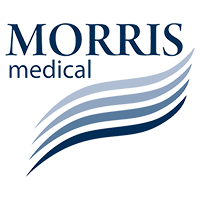Indications
In patients with venous disease, the internal walls of the leg veins are deteriorated and the small valves are defective and incompetent. When a valve is incompetent, either in the deep or superficial vein system, blood flows backwards towards the foot. This is called reflux. When valves are incompetent in the superficial veins only, the deep veins have to carry more blood towards the heart. To compensate, the veins expand and the valves may not close properly. When this happens, such as in the case of severe varicose veins, the deep vein system may also become incompetent. When blood is no longer pumped effectively from the lower leg, the peripheral veins will not be emptied even when walking. They remain filled with blood and the pressure in the vein will not decrease. This condition is known as chronic venous insufficiency (CVI) which may result in edema, skin change and in some cases ulcerations.
Wearing SIGVARIS medical compression stockings combined with movement will ease the venous blood return, decrease the hypertension, and slow down the progression of the disease. Click on the following link to see specific information on the respective application field of compression stockings:
- Varicose Veins
- Deep Vein Thrombosis (DVT)
- Leg Ulcer
- Diabetes
- Lymphoedema
- Pregnancy
- Travel
- Lipoedema
- Venous Oedema
Signs and symptoms of venous diseases
Depending on degrees of severity, symptoms of venous disease or Chronic Venous Disorders (CVD) include:
- Feeling of swelling
- Feeling of heaviness in the legs
- Pain or cramps in the calves
- Skin discolorations
- White atrophy
- Dermatoliposclerosis
- Dermatitis (skin problems)
- Dry or weeping eczema
- Venous leg ulcer (open wound)
Acute manifestations of venous disease are serious disorders such as superficial (SVT) or deep venous thrombosis (DVT). These disorders usually occur suddenly without pre-existing conditions, but can also be triggered by chronic venous disease. (see Chronic venous disease, Acute venous disease).
Causes of venous diseases
The causes of venous disease are not clearly identified yet. Considering risk factors we have to differentiate between varicose veins and chronic venous insufficiency.
Risk factors for varicose veins are:
- genetic disposition (history of varicose veins in the family)
- gender (1 out of 3 women and 1 out of 5 men are affected)
- pregnancy (30% of women will develop varicose veins during the first pregnancy, and 55% will during their second and following pregnancies)
- age (people older than 50, as older people are more susceptible to develop varicose veins)
Risk factors for chronic venous insufficiency are:
- professions requiring prolonged standing or sitting
- gender (women develop edema more often)
- obesity (CVI may develop even without reflux or obstruction in the veins)
- age (older people are more susceptible to develop venous disease)
Can we cure venous diseases?
Defective venous valves of varicose veins cannot be replaced or fixed. Superficial venous refluxes can be repaired by surgical removal or sclerotherapy of the varicose vein(s). However, chronic venous disease due to deep venous incompetence – such as in post-thrombotic syndrome – can only be treated by valve repair or neo-valve construction in isolated cases.
Chronic venous disease evolves with time. The therapy consists of methods that help to reduce the “ambulatory venous hypertension”. Phlebologists, – physicians specialized in veno-lymphatic diseases -, all agree that compression stockings are THE basic treatment of venous disease. This is the reason why medical compression stockings are recognized as a medicine.
Wearing SIGVARIS medical compression stockings combined with movement will ease the venous blood return, decrease the hypertension, and slow down the progression of the disease.
